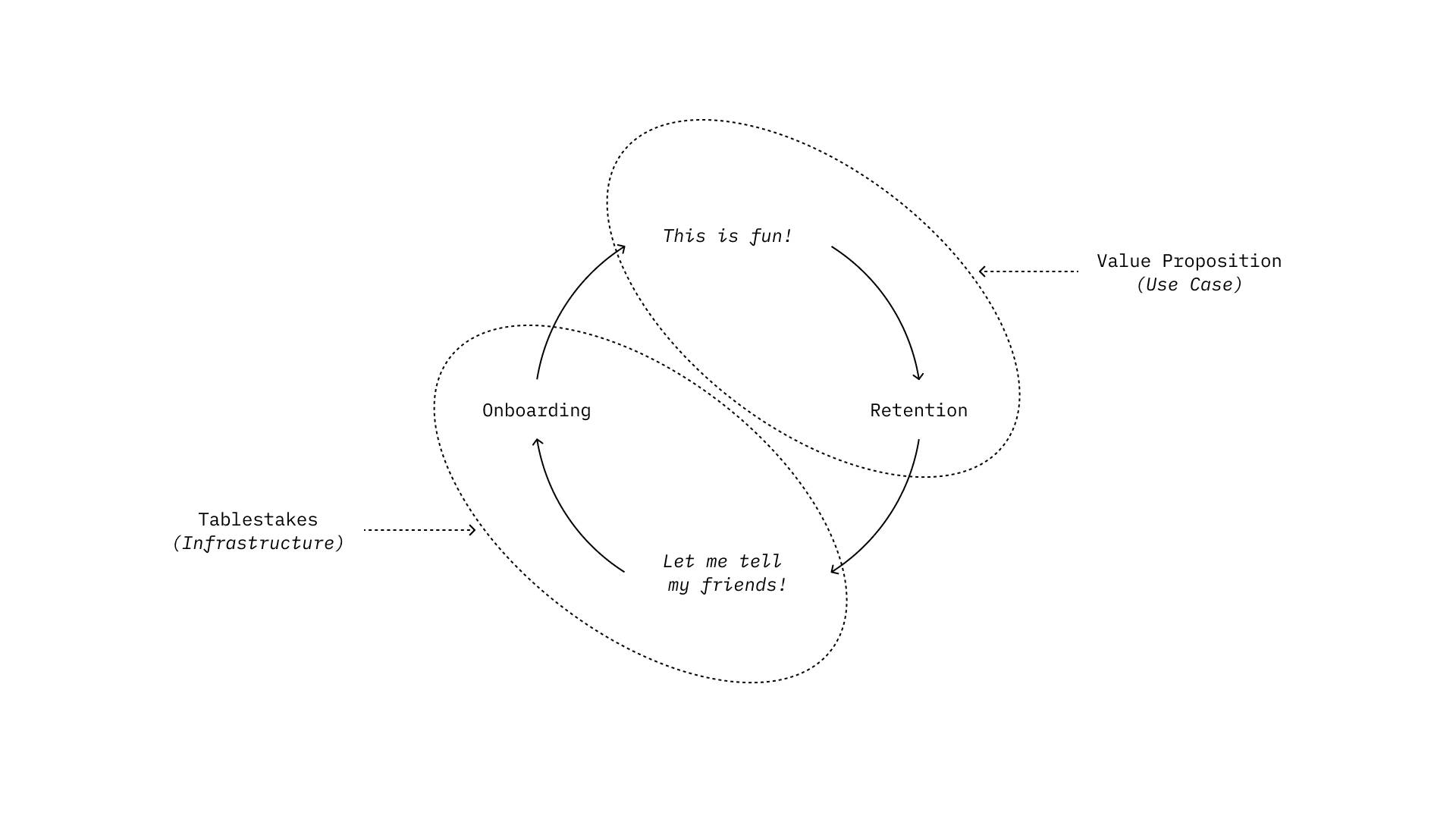/ramblings
Need First, Then Tech.

Consumer goods are hard apps! Period. As notorious early adopters, we’re the only ones hooked by faster transaction speeds compared to the real world. But seriously, speed matters a lot less if you just have a great waiting screen to occupy someone’s mind.
What really matters—and I’m adapting this from a post by Nikita Bier—is that most consumer apps fall into three categories: Get Rich, Get Laid, Get Distracted, and their overlaps. People want to earn or save money, zone out with entertainment, or hook up (whether finding coworkers, friends, or future family members). These are basic needs that consumer apps target, not the tech.
For years, we’ve asked, "What can this tech do?" But for most consumer apps, it’s What do people want? and How does tech unlock that in a whole new way? Ideating from a tech-first perspective always leads to bad ideas. So, step one: What need do we fulfill? Get Rich? Get Laid? Or Get Distracted? Then, how do we use tech/infra to mess around?
Onboarding and Retention.

Good apps have two key moments: the onboarding hook and retention loops. Onboarding can’t be asking me to connect services, click through setup screens, and fill out forms before showing me what you do. Every extra click before I understand the experience loses users. Maybe don’t even ask for sign-in—look up my address and show me something right away. Make it easy, make it fast. Show value first, then let me buy into it.
Get them in ASAP and give them a positive experience instantly. The more screens and clicks, the more users you lose. Onboard fast, give them that "this is fun" reaction immediately.
Now, keeping users is another challenge. People abandon things when they don’t get the need they signed up for addressed. There are many reasons why people come back, but for consumer apps, and bear in mind everything on-chain is a huge live service game, it’s all about content and relationships that bring users back.
Getting the best content is hard. The cost to migrate from existing platforms is high. You don’t want millions of “I just signed up and happy to be here” posts—you need quality. Quality is hard. New content formats help but are easily copied. Novelty rarely sticks today.
If content is hard, it’s all about relationships. People join spaces because others are there. The problem we face is twofold: One, growing a user base requires the right community and strategy. Growth from niches often makes a product stickier. Two, with crypto’s novel incentive structures, a consumer app full of "farmers" only works if it’s designed around getting rich. If you’re there to connect or be entertained, you’ll likely feel alienated. So, design for the right community from the start.
How to Build.
In a nutshell: What need does your app solve? Do people get rich, laid, or distracted? Can they get a positive experience right away without hundreds of clicks? Is the content and the other users bringing them back? How can you leverage the content created and the users to drive onboarding itself?
That’s a hell of a different approach from traditional on-chain thinking: less "contract first," more "need first."
Building a consumer app in Web2 means you build an account system, social graph, payment rails, and data storage from scratch. On-chain, you get these out of the gate. So, instead of focusing on technical imagination, reimagine how existing building blocks create something new. Use Farcaster or Lens for the social graph, wallets as accounts, on-chain actions like Enso for transactions, and prototype the hell out of it.
On-chain tech used to be so hard you had to be certain about your idea before starting because you had to engineer it. Consumer apps work differently: Need first, then use the tech building blocks we have, and pivot fast until you find consumer fit. Consumer products rarely start as an idea—they evolve through live iteration.
Innovate on the Experience, not on the tech. Use the blocks.
If you build products and want feedback, let me know.